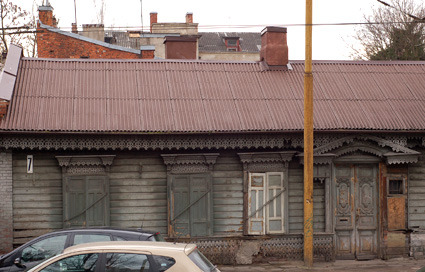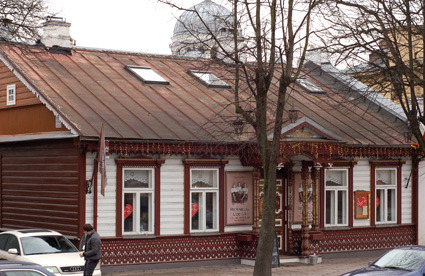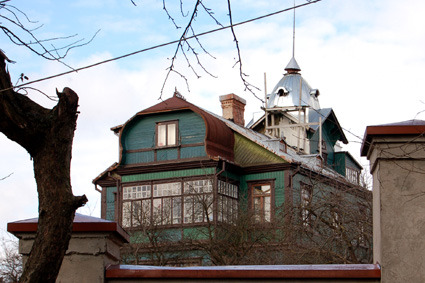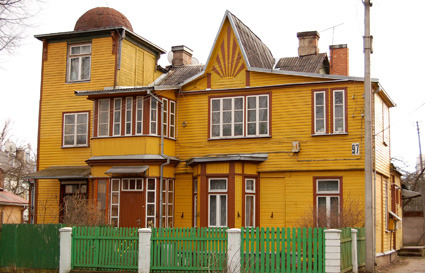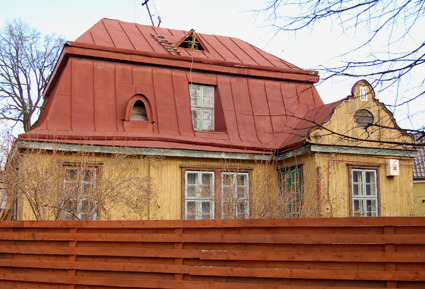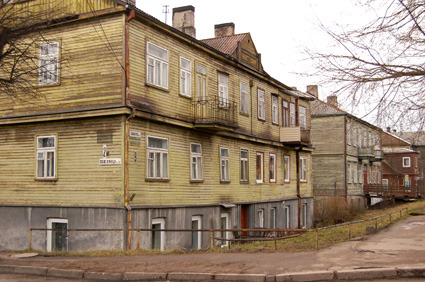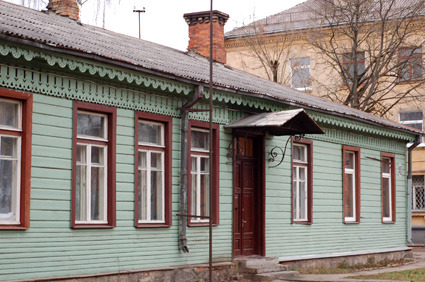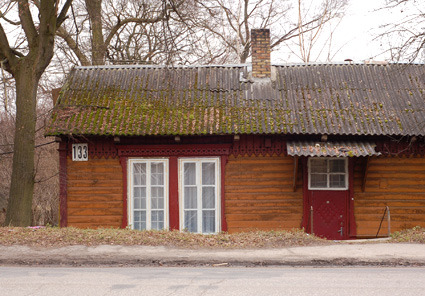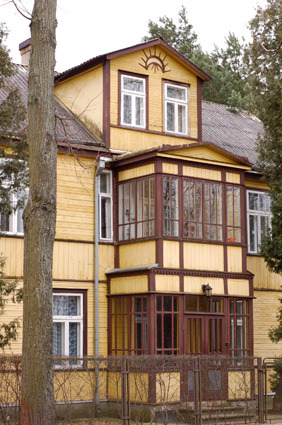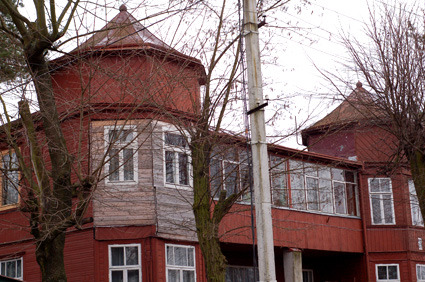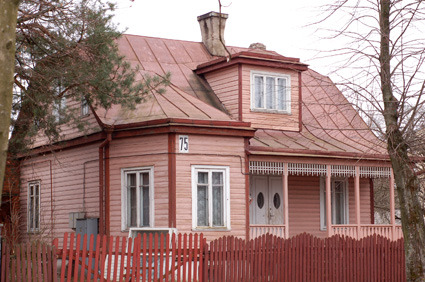WOODEN KAUNAS: VALUE WITHOUT SURVIVAL GUARANTEES 0
(A look to historical remnants) Aušra Blinstrubaitė
www.kamane.lt , 2008 03 17
Wooden buildings included into the register of cultural heritage in the central part of Kaunas (Kumelių Str. 6, Donelaičio Str. 7 and 11).
Examples of architectural variety of wooden houses in Žaliakalnis suburb (Alantos Str. 12, Žemaičių Str. 20?, Žemaičių Str. 97, Minties ratas 17, Zanavykų Str. 9, Minties ratas 6)
Residential houses decorated in Russian folk style in the Lower Šančiai (Juozapavičiaus Str. 42, 119 and 133)
Eclectic but exceptional architecture of wooden houses in Panemunė (Smetonos Al. 81, 29 and 75)
In brief: While new quarters of high-rise buildings emerge, glass, concrete, plastic and metal is replacing the most natural construction material wood, one may drop to wooden quarters built in Kaunas suburbs at the end of the 19th - first half of the 20th century. Not all of them have survived in the same way, their cultural and architectural value differs as well. Not all of them will be preserved due to the expanding city and new constructions.
Still, it is interesting to have a look at such Kaunas quarters as Žaliakalnis, Panemunė, Lower Šančiai, which have maintained the life spirit and rhythm of the previous centuries. Some of the oldest wooden buildings of Kaunas may also be found in the centre of the city.
The more valuable wooden buildings of Kaunas are rather young from the historical point of view – they were built at the end of the 19th – first half of the 20th century. The most valuable examples included into the register of cultural heritage may be found in the old town of Kaunas (Kumelių Str. 6) and new town (Donelaičio Str. 7 and 11).
Meanwhile, the majority of remaining wooden buildings accumulated in the quarters which were attached to Kaunas at the beginning of the 20th century. Žaliakalnis became part of Kaunas city in 1919. Intellectuals and officers settled in this part of the city; therefore, the remaining wooden buildings are outstanding by more original architecture, elements of styles of masonry buildings that prevailed in the first half of the 20th century – historicism, eclectics. The houses of this suburb represent the idea of a city-garden popular in Europe at the end of the 19th century.
The Lower Šančiai suburb of Kaunas expanded spontaneously, without any particular plan. Workers settled here due to the fact that industrial objects, the railway was constructed nearby. Wooden houses which are not exceptional by their architecture, shops, workshops were constructed here. They testify about the occupation and lifestyle of people of the beginning of the 20th century up to these days. One may find more decorative wooden multi-apartment houses decorated by the style typical of the Russian folk architecture – such are the majority of wooden houses in Juozapavičius Street.
Meanwhile, Panemunė township was attached to Kaunas in 1931 and became a kind of resort of the city due to its geographical situation – the River Nemunas and a pine forest near it. Similar to Žvėrynas suburb in Vilnius, it obtained the same status in the interwar period – the suburb of prosperous inhabitants’ villas. Mostly these were wooden villas constructed in large land plots with much greenery around. One may still notice some private villas and larger multi-apartment wooden houses which were most probably rented for the holiday-makers in Smetona Alley, Gailutė Street. These buildings are exceptional by eclectic architecture of Smetona times.
The surviving wooden residential buildings of Kaunas are rather diverse – villas with penthouses and balconies are frequent among buildings of poorer architecture, two-storeyed houses for several families are abundant. Many buildings have glazed porches loved by Lithuanians. Some houses are outstanding by decorative shutters, window frames, ornamental perches. Historical resources testify about wooden public buildings, schools, a kurhaus, but they have not survived till today.
The remaining residential buildings are also becoming extinct due to new materials, development of the city, poor condition and lack of knowledge and understanding of people owning them. The reason for this is the lack of legal basis which would regulate the protection of traditional wooden buildings of the city without bright features of stylistic architecture, the lack of systemised research and methodology of establishing their value.
One of the method to preserve the authentic view of parts of the city with wooden buildings is the preparation of a regulation for the entire suburb, i.e., a complex of buildings. Such a regulation was prepared for the historical part of Kaunas Žaliakalnis in 2002. However, attention should be paid to other valuable wooden heritage objects in Kaunas as well. A programme for preserving the most valuable wooden buildings could be prepared similar to the programme approved of in Vilnius, the purpose of which is to restore the most valuable wooden architecture items using the common efforts of owners and the state.
